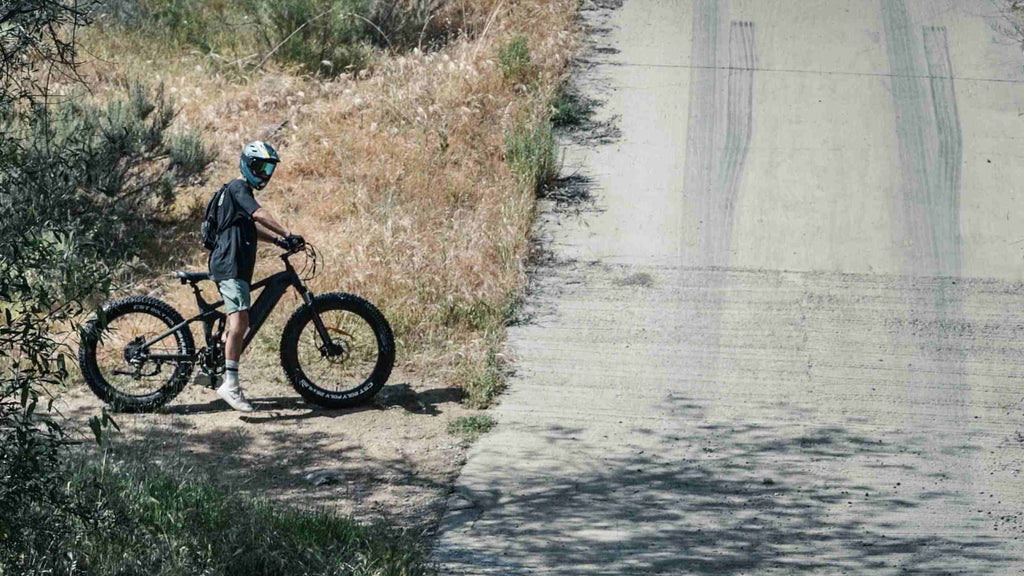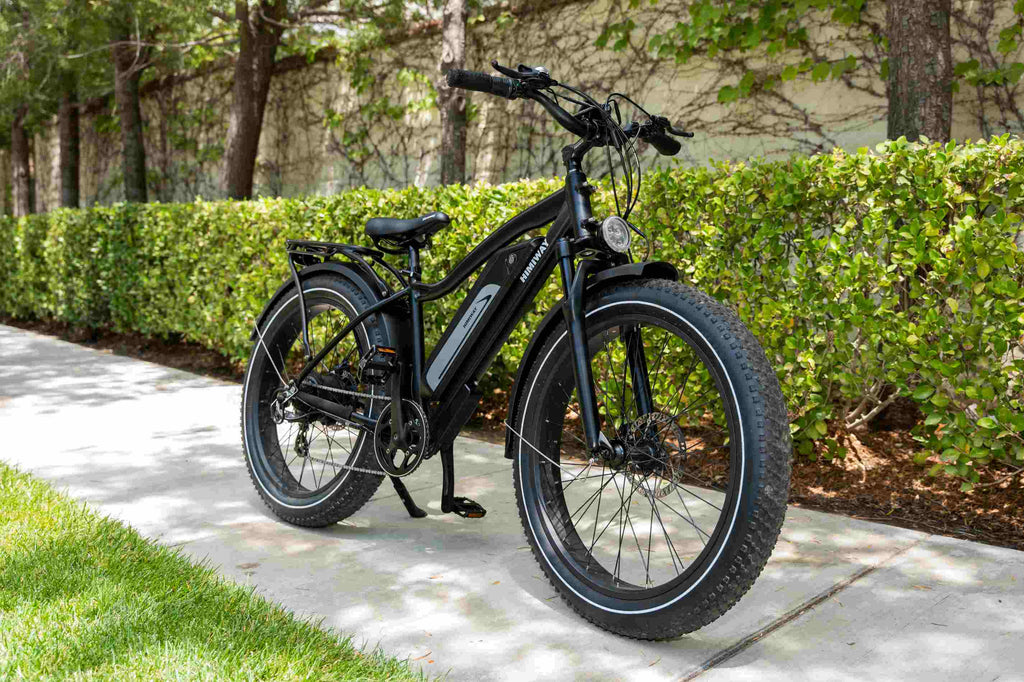
Complete Guide to Different Types of E-Bike Gears
Do you ever ponder the importance of gears on your electric bike? They are as crucial as most sought-after e-bike elements like motor, range, and battery size. In most cases, people pay little or no attention to gears while researching to purchase an electric bike. High-quality ebikes can boost your confidence while riding when you understand how the components work.
The difference between a fat tire e-bike and a regular bike is that an electric bike features an electric motor that enables you to cycle at a higher pace while exerting less effort. Also, using gears on an electric bike helps you control and maximize your energy output to ride for extended periods. These gears can help you achieve a smooth and energy-efficient ride when you learn to use them with the pedal assist levels.
Therefore, this article gives you a complete guide on the different types of e-bike gears, how to choose the best for yourself, and essential tips on e-bike shifting and best practices.
Different Types of E-bike gears
Starting with the types of gear on an electric bike – the three types found on electric bikes are Hub gear, derailleur gear, and the continuous variable transmission gearing system.
-
1. Hub gear
The hub type is the market's most popular gear-shifting system for e-bikes. The gear is in the rear wheel's hub. It usually comes in a set of seven to provide convenience and smooth riding. Most riders prefer the hub gear as it requires little maintenance. In most cases, the hub gear is operated through a twist grip, enabling riders to switch gears even when they stop riding without damaging the system.
Pros of a hub gear
-
Lesser maintenance:
The hub gear requires little maintenance since it is internal. Hence, dirt and moisture can't get in easily. Therefore, it wouldn't require much servicing and care; but it would still need servicing regularly.
-
Longer life span:
The components are durable due to riding with two options. You can use either belts or chains.
-
Adaptable components:
The hub gear is a suitable gearing solution for weather conditions since they are internal.
-
Versatile in nature:
You can shift several gears simultaneously when the bike is static, making it perfect for stop-start rides.
Cons of a hub gear
-
Heavier in weight:
Compared to other gears, the hub gear is heavy due to its extra components and weight on its back wheels. Thus, they weigh more than derailleur gears.
-
Slower gears:
Due to efficiency loss and extra weight, riding an ebike with a hub gear would have slower acceleration. Therefore, maintaining speed would take more energy.
-
Lesser range:
The hub gear may not go as far because the power produced by pedaling has to pass through several. During this process, you lose energy when it moves from one to another. Hence it affects the range, which can make riding slower.
-
More expensive:
It is more costly to purchase and maintain when damaged than other gear systems. When the gear is faulty, you need an expert to install and fix rightly.

-
2. Derailleur Gear
The derailleur gearing system has a cassette of gears attached to the back wheel's hub through a chain connecting to the cog attached to the pedals. To change this gearing system, you have to use a switching mechanism. The mechanism and gears are on the rear wheel. The most popular derailleur system used on e-bikes is the Shimano and SRAM. The Himiway Cruiser Long Range Fat Tire Electric Bike and Himiway Cobra Electric mountain Bike have a derailleur gear system, specifically the Shimano 7-speed gear shift. Both e-bikes offer long-range. This is one of the superior advantages of derailleur gear over hub gear.
Pros of a derailleur gear
-
Lightweight in nature:
The gearing systems are lightweight compared to the hub gear.
-
Suitable for all terrains:
The derailleur gearing system is ideal for rugged or off-road rides. Most mountain ebikes have derailleur gears rather than hub gears.
-
More gearing options:
The gearing system provides an extensive range of options. You can choose between low or high gear. It has very low gears for easy hill climbing and high gears for speed on the flat and downhill.
-
Less expensive:
The gearing system is budget friendly when you want to replace it if damaged.
Cons of a derailleur gear
-
More prone to damage:
Since the derailleur gear is nearer the ground, it can easily get damaged while riding.
-
Not Flexible:
It is not advisable to shift gears while the bike is static or change through many gears in one shift.
-
More maintenance:
The gear requires consistent maintenance as it easily attracts dirt due to its open design and exposure to dirt. The exposed chain guard leads to difficulty shifting. Also, you would have to adjust the derailleur and shifter cables regularly.
-
3. Continuous Variable Transmission (CVT) Gear system
The CVT gear system is an advanced electric bike gearing system that features automatic gear shifting. In the Continuous variable transmission gear system, the gearing moves up and down the range when you press a button or twist a handgrip. This system is always in gear. Therefore, it is impossible to get out and have the pedals spinning.
Pros of Continuous Variable Transmission
-
Easy to use:
The CVT gear system doesn't require special training due to its automatic feature. Hence, moving from one gear to another is seamless.
-
Low maintenance:
It requires low maintenance since the gears are less exposed to dirt
-
Automatic gear:
The system changes gears for you automatically; you don't have to twist the handgrip or press a button.
Cons of Continuous Variable Transmission
-
Heavier weight:
It is relatively heavy and has more pedal assistance than other gear systems.
-
More affordable:
The CVT gear system is less expensive than other gear systems.
How to choose the best gear for yourself
Selecting the best gearing system can be a challenging decision to make. While choosing your ebike, you must find one that satisfies and best suits your needs – either to lose weight or for other purposes. Thus, finding the right gear system is essential. The hub gear will be the most suitable for you if the following occurs:
- 1. You use your e-bike regularly for commuting purposes.
- 2. You use a belt-drive bike, and you want to avoid oil stains on your clothing.
- 3. Or you want to be able to change gears while static.
However, the derailleur gear is mainly suited for some categories of e-bikes built for specific purposes. Electric bikes with derailleur gear often focus on high quality, performance, and price. The derailleur gears are best for mountain biking.

Electric bike shifting tips and best practices
You will be a more energy-efficient rider by mastering the act of balancing your e-bike electric power assist with the mechanical gearing and physical input of your bike. Below are some tips and best practices on gear shifting to help you attain balance while riding:
- 1. Don't change gear when stationary.
- 2. Adjust your gear and pedal assist shifter's position on your handlebars to a comfortable position.
- 3. Always try to anticipate the terrain ahead by changing gears and pedal assist level to suit the terrain in front.
- 4. When you raise the pedal assist level, you should increase the level of the mechanical gear to optimize your power while riding.
- 5. While switching between mechanical gears, keep pedaling smoothly to ensure an easy transition.
Conclusion
Finally, the differences and importance of the gearing systems in your electric bike are glaring. The gearing system creates pathways to enjoying a smooth and energy-efficient ride. The system works for different purposes, so you must find which gear suits your need and adhere to the tips and best practices of e-bike shifting.







































 NL
NL
 United States
United States Canada
Canada Deutschland
Deutschland United Kingdom
United Kingdom Switzerland
Switzerland
